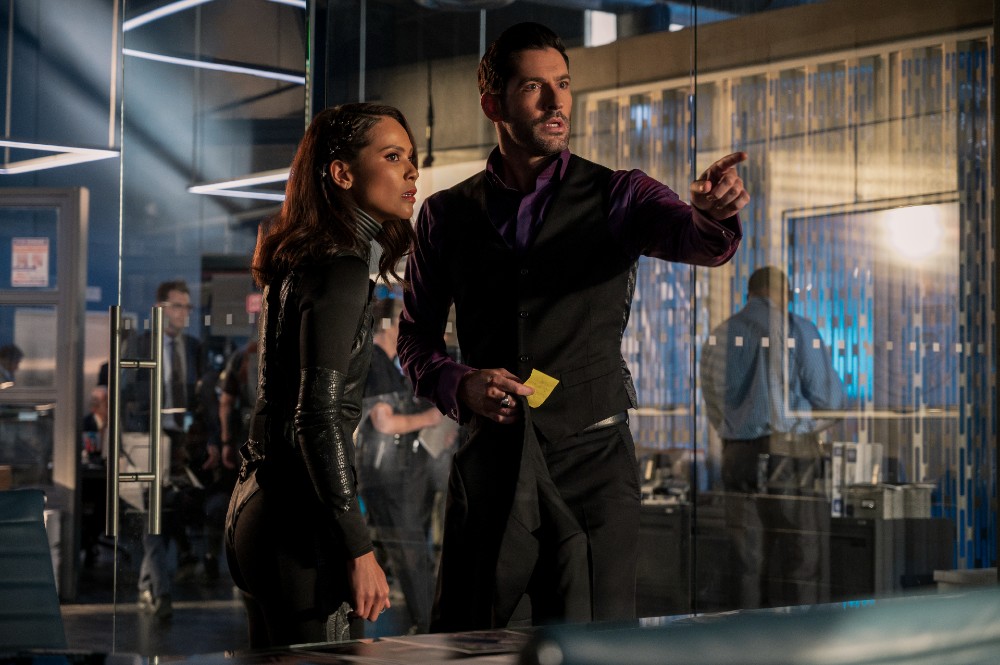
Alex Hajdu is on a roll. The veteran Production Designer spent several years working on Lucifer, starting with Season Three, and following its recent conclusion, he moved straight on to the CBS reboot of CSI: Vegas.
Truth be told, though, Hajdu has rarely been without work – and early on created that work for himself out of a love for movies, no small measure of ambition, and plenty of talent. It all began with Roger Corman’s Battle Beyond the Stars, which also was the launching pad for James Cameron. Hajdu went on to serve as art director on dozens of films and shows, including Amazon Women on the Moon, The Mist, W, Mob City and Secrets and Lies, before graduating to production designer on Sledge Hammer!, Law Abiding Citizen, Magnum, P.I., and the aforementioned Lucifer and CSI: Vegas.
Hajdu memorably devised Lucifer’s iteration of Heaven (and its Gaudi-inspired God’s Throne Room) and, for CSI: Vegas, he created the remarkable lab sets that are as much a character as those played by William Peterson, Jorga Fox, Paula Newsome, and the rest of the returning or new cast.
Below the Line recently caught up with Hajdu, who filled us in on how he got his start, his experiences on Lucifer and CSI: Vegas, and his thoughts about how AR and VR might change the production design game.
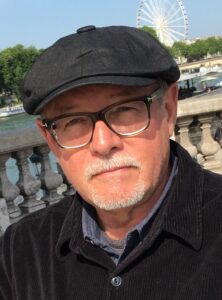
Below the Line: How and why did you get into the business?
Alex Hajdu: I’m an immigrant. My parents escaped from Hungary in 1956 and we moved to Hollywood when I was about six. The first place that we lived was on Gower and my window looked out at Desilu Studios. So, that may have started the whole thing, psychologically, for me. I used to, as I walked home from school, sneak into the backlots and play around in them. That made an impression on me. I always wanted to be involved in the movie business, from a very early age. I took the bus to movie theaters on Hollywood Boulevard and saw movies every weekend. So, by about age 15, I made the decision that I somehow wanted to work in the business. I’d just volunteer for anything I could get, any student film. It didn’t matter; whatever I could do to help, just to learn. I really worked my way, literally, from the ground up. I was a P.A. I was a prop assistant. I was going to LACC in the film department, and I got a job working on staff as a P.A. at a one-director boutique commercial house in Hollywood. I was there for about two years. I did everything. They also put me on as a prop assistant whenever they did shoots for commercials. I found that I had an aptitude for that, and I eventually became a prop master for commercials in the 80s.
Then I got a chance to work on a Roger Corman film, Battle Beyond the Stars, which was his answer to Star Wars. That’s also where Jim Cameron started. He was in the model shop at the time, and so I met Jim and within a two-week period of going there, it was such chaos that we in the art department felt we were leaderless. The production designer they’d hired originally got fired because we had about six weeks, whatever it was, before principal photography, and there was nothing designed. We had seven alien cultures to design, spaceships and interiors for them. The only two people who had it together were the Costume Designer Durinda Woods, who had everything figured out for her alien cultures and costumes, and prosthetics, and Jim, on the visual effects end, building the models and carving the main ship. So, we nominated him as our art director, and I became an art director. So, he and I traded responsibilities for that first movie. He took one shift, and I took the next. We had about four hours sleep every night and we slammed it out. It was a real learning curve.
BTL: What was the takeaway from that baptism by fire?
Hajdu: That there’s always a solution. That you just have to be creative with your resources. We really had very little in the way of resources, so we had to be very, very inventive with materials and applications. It was challenging, but Jim is such a genius. It was an honor to work with him because he really would come up with solutions out of thin air. It challenged me to do the same, so it upped my game really fast.
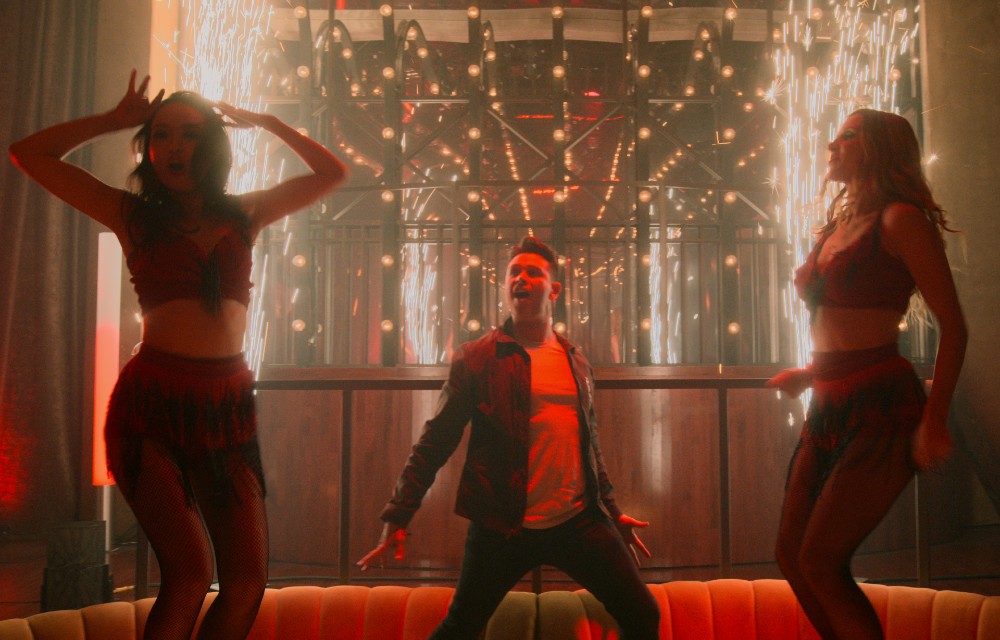
BTL: What, to your thinking, is the job of a production designer?
Hajdu: I’m in charge of everything that’s in front of the camera, as far as I’m concerned. At least, I get involved in the decision-making of all of those things, including costumes, if it’s warranted. I don’t really meddle in other people’s departments. I like the costume designer to do her thing, or his thing. But we do share information. I feel responsible to include them in my process, in my color scheme, and so on, so that we’re not clashing or blending too far, so we don’t see characters disappearing into walls and so on. But unless there’s something specific, like masks or some other sort of stylistic choice, I get very involved in that. But really, it’s picking the locations and it’s designing the interiors, and solving whatever logistical problems and artistic problems that may come up from the script.
BTL: You have worked as an art director and a production designer. Even people in the business are sometimes confused about the differences between the two jobs, and how much overlap there is. Take us through your thoughts on the differences and overlaps…
Hajdu: As an art director, I was sort of the manager of the department. It’s more about “Who? What? And Where?” I would say the production designer is the “Why?” So, the art director thinks, “How am I going to do this? Who’s going to do it? What’s it going to cost? When is it going to get done?” And so on. They’re working on all the mechanics, the moving parts of the department. And the production designer should be left to sort out how best to tell the story visually, with input from the script writers or the showrunners, the director, etc. So, conceptually, that’s where the ideas are formed, and then they’re passed on to the art director, who then manages getting it done.
BTL: When does your work come to life for you? Is it when you and your team have finished building it? Is it when the actors and crew are on set working in it? Or is it when the show airs or the movie opens?
Hajdu: I think it’s when the set has come together. A lot of times, it doesn’t feel like it’s there until it’s all there. I watch it being built. I’m very involved with the paint level, and then very involved in the decorating. I’m also in conversation with the DP about the lighting. So, I try to be involved at every phase. But when the set is lit and everything is done and dressed and the actors show up for rehearsal, that’s when I can see that it’s all there, because everything has to tie together. Everything has to work together.
BTL: Lucifer just ended. How much of a playground was that for an artist?
Hajdu: I have to give credit to [Showrunners] Ildy Modrovich and Joe Henderson, because they really gave me free rein. They supported me and gave me a chance to come up with ideas, and they encouraged pushing the boundaries to try to tell the story. And they didn’t meddle. They just took an idea in and saw if they could work with it. Then they’d make whatever changes they thought necessary and then moved on. It was not a big presentation situation. I presented and then I’d say nine out of 10 times we went with the original idea. So, it was a complete playground that way. I had an excellent art department, the best I’ve ever had, and we were able to pull things off that normally wouldn’t be able to.
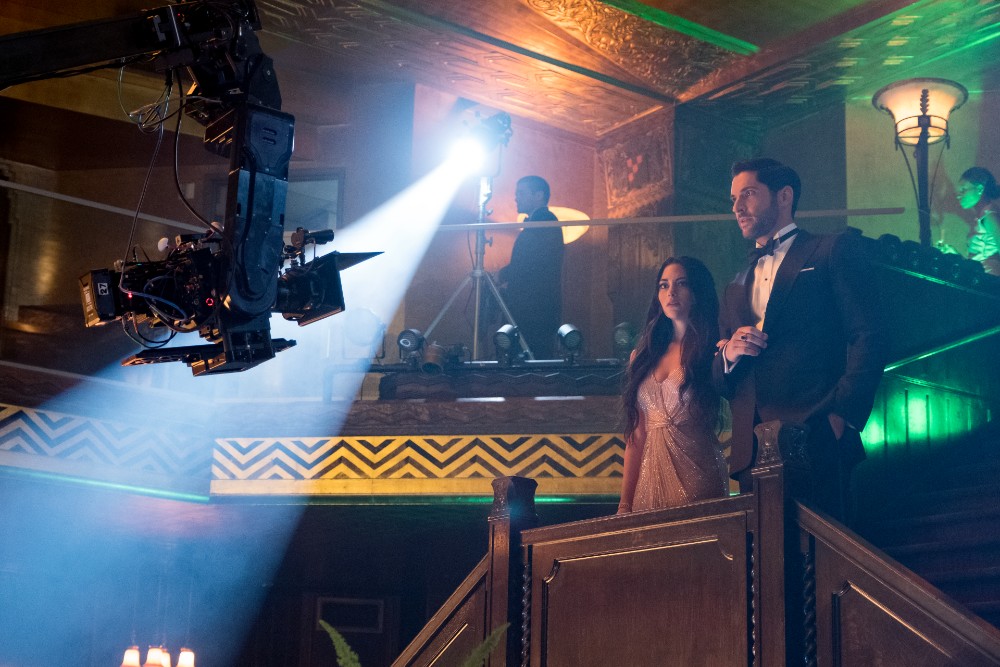
BTL: Tell us about that team…
Hajdu: My right hand was Tim Eckel, he was my art director. Duke Tomasick was my construction coordinator, and his team was incredible. Frank Oliveri was the lead painter. We had many sculptors come through. I had several set designers, but James Addink was there quite a lot, and then Tom Wagman towards the end of the season. They were key in developing concepts, because my presentations were all in 3D if I could manage it. I had several set decorators.
BTL: Hell had been pretty much established before you got involved with Lucifer, but when the production moved from Canada to L.A. in season three and you came on board, you had the chance to create Heaven. That was a mighty impressive set. Did you get to keep a piece of it?
Hajdu: I was following what was established for Hell, but Heaven was my baby. And, no (laughs), I didn’t keep a piece of the set. I got all of my satisfaction from being involved in helping to create it. I have lots of digital files, and that’s just kind of where it is these days.
BTL: Let’s switch to CSI: Vegas. I’m assuming you had either just wrapped or were about to wrap Lucifer and were looking for your next gig…
Hajdu: Exactly. I was asked actually by Mr. [Jerry] Bruckheimer to come in because they were four weeks short on prep. They had started with another designer and changed course. We were on the second day of the last episode of Lucifer. This was in March. They had a presentation coming up, so I had like nine days to put together a presentation first for the Bruckheimers and then the following week with the network. So, that was a huge challenge. There were probably 14 laboratories in one space on a platform in a warehouse. We did it in a Sketchup model with Tom Wagman, my set designer, and we went from one lab to the other. I’m not talking about just a floorplan or just even Sketchup model walls. We actually had furnished all of these things with laboratory tables. Some of these are library images. Some of these we built. We built not just the laboratories, but we also built a ballistics room and a gun room and an evidence room. And, of course, Max’s office, which was a real focal point for the set. The entry had a DNA-shaped spiral staircase that looked out over the Vegas skyline. We had two backings, one at each end. One was supposed to be a very stylized expression of the Vegas skyline, day and night, so you got the romance of that image. The other side was supposed to place the location of this warehouse somewhere close to the outskirts of Las Vegas, but also with an interesting skyline. So that was a huge task. All of the laboratories are glass and concrete, so you’re seeing through to every set from every other set interior, which was another challenging bit. There’s no place to hide anything. You’re seeing everything everywhere. By the way, the science is real, the equipment is real, the processes are real. The scripts are written around that science. We’re just creating space for these things to exist. And the morgue… I wanted to take that to another level. I studied what had been done with prior morgues on CSI, and I just made it a more interesting space, and a bigger space to work in, with lighting opportunities.
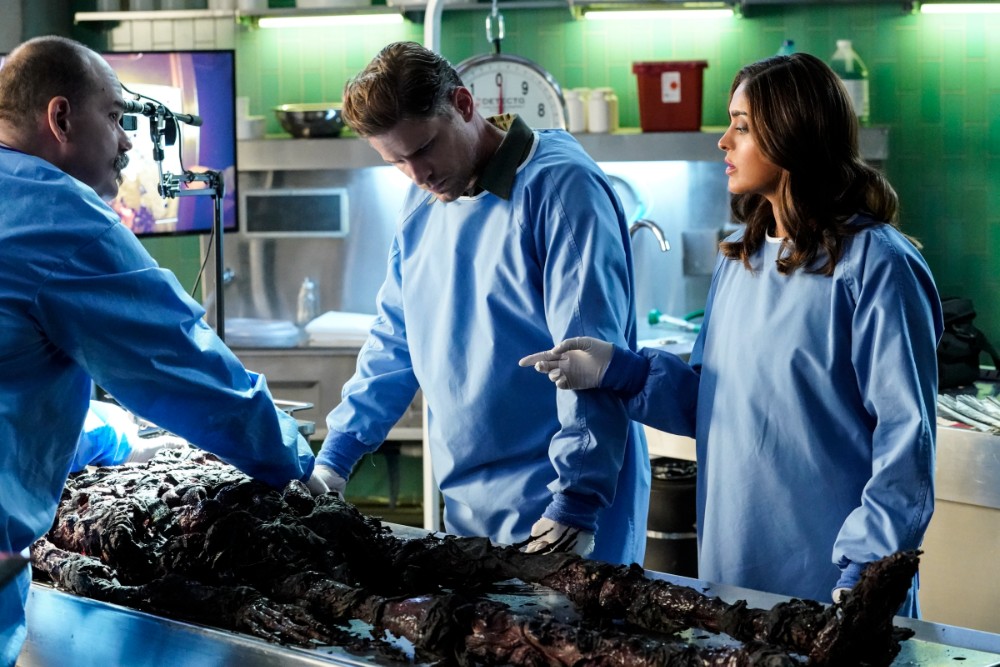
BTL: How has technology changed the game, beyond using Slack and Zoom to work with your team and the production remotely during the pandemic? Some shows are using an AR wall, for example…
Hajdu: I think it’s out of reach financially for most shows. Obviously, it works for Star Trek. It works for The Mandalorian. I think it’s coming, but it’s not the one-size-fits-all solution. It still works for actors to be in environments. When you’re in an alien landscape, or it’s a sweeping landscape and off to the horizon, it makes sense for that. Or if you’re in a spaceport or some other environment like that, it makes perfect sense. I understand they did it for Muppets Haunted Mansion. I can see it working for certain things. I think for episodic television, it may not be there for everyone.
BTL: Battle Beyond the Stars was released in 1980. If you think ahead to the future, what will be the next big steps in the design realm?
Hajdu: The digital wall is going to be one of them as it becomes more affordable, but I think VR is going to be next. That’s why Facebook is trying to switch over to that world. There are already tools to work in a VR environment that the director can wear, the art department can wear, where the director can look around in the space they’ve developed and make changes. You can actually reach in and move things around and change things on the fly. I’m not there yet. It’s not everywhere. It’s in a very few places. Everything else is pretty much still physical production. But that’s next. That’s got to be next.
CSI: Vegas airs on CBS, while Lucifer lives on for eternity streaming on Netflix.
All photos courtesy the respective copyright holders, as listed.





